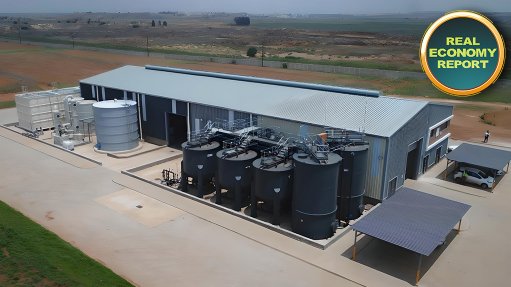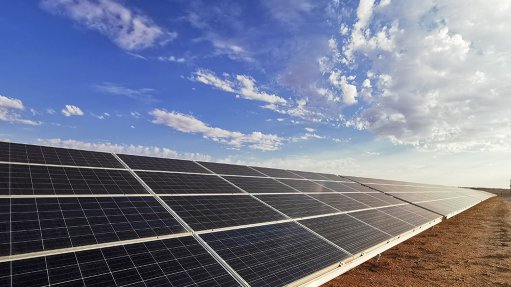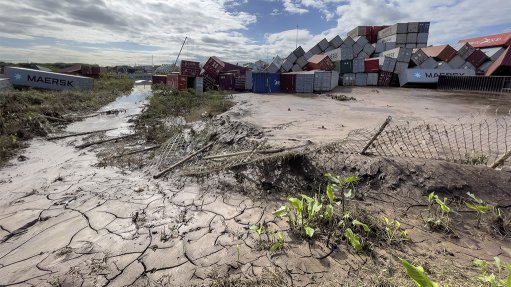Better Infrastructure and the Fate of Fleets
This article has been supplied as a media statement and is not written by Creamer Media. It may be available only for a limited time on this website.
By Sales Director of Webfleet, Bridgestone’s Mobility company, Justin Manson
Government’s most recent pledges to begin the procurement of services in extensive new build and upgrade of road infrastructure offers a glimmer of hope to businesses in the transport and construction industries. Justin Manson of Webfleet, Bridgestone’s Mobility company, hopes that by expanding and improving public facilities, the easing of congestion will slow their general degradation and make them safer for road users while feeding the economy.
Part of the reality with South Africa’s failing electricity and water systems is that the facilities in place were not originally designed to serve as large a population as today relies on them to live. The roads bear an even greater burden due to the disrupted rail network provider currently working to rescue routes and refurbish equipment. This should make these revamped rail routes more relevant to modern mining, industrial and commercial operations that could benefit from its potential cost-effectiveness.
Over the coming three years, according to the Finance Ministry’s annual budget published in February, the Government will be spending an estimated R903-billion on hard infrastructure. Most of this will be focused on strategic transport and logistics, and water and sanitation.
Earlier in February, the South African National Road Agency (Sanral) announced that it had awarded four long-overdue, major construction tenders for projects on the new N2 Wild Coast highway in the Eastern Cape and the N11 in KwaZulu-Natal earlier this year. Politics aside, these should be welcomed, as these provinces have each suffered their own challenges related to their roads and traffic.
Now, stepping into a new economic era driven by knowledge, creativity and design. Industrially manufactured and locally designed goods, from art works to high-tech equipment for a variety of sectors, will grow in scale as the South African resources sector undergoes its own transformation, with reserves remaining an unknown projection.
Sanral’s investment creates much needed capacity in the country’s major coastal economies, boosting the construction industry while opening a key artery of trade. It forms part of a broader government programme mandated to uplift economic growth of KwaZulu-Natal and the Eastern Cape.
The roads agency states: “The much shorter and quicker N2 route will dramatically reduce traffic carbon emissions, travel time and costs. The 1,5-to-3-hour reduction in travel time for light-to-heavy vehicles using the current N2 and R61 routes between KZN and EC will result in a projected time cost saving to the economy of R1,5 billion per annum. The new route will also open access to the unique, but under-developed, Pondoland region boosting regional and local socio-economic development, particularly in tourism and agriculture.”
The 410-km N2 Wild Coast Highway, running between the N2 Gonubie Interchange and the Mtamvuna River bridge, is a key step in government’s Strategic Infrastructure Projects SIP-3, South-Eastern Node and Corridor Development.
While new roads are very well desired, refurbishment of existing infrastructure is also certainly needed, and will drastically improve the safety of passing motorists, something needs to clarify along with the announcement of new projects.
In the recently published maiden Webfleet Road Safety Report, where we surveyed a large sample of fleet operators, it emerged that 7% of accidents are caused by poor road conditions. If we can bring this down 2-3%, we would save thousands of lives each year.
Government, supported by the private sector and local communities, must also urgently repair the existing rail infrastructure. Abandoned stations, overgrown gantries and rusted tracks could all be brought back to life, to further ease congestion and begin the drastic improvement in road surface quality across the nation.
Fleet owners should be preparing for a massive evolution in South African logistics. They will have to contend with more customers upholding stricter contractual conditions, like large multinationals. Lack of insurance or vehicle telematics, for instance, will be a non-starter. Managers and those utilising their service will want to keep an eye on the live on-board diagnostics data, which will be relayed back to central command for directors and customer to see the entire operation in detail, making for quicker and better decisions on live route planning, vehicle health and driver well-being.
The job now, during the construction of this new infrastructure is to collect as much data as we can throughout the development, ensuring that live traffic information is captured and fed back to road users as close to real-time as possible.
Eventually, through technological refinement, devices fitted to monitor vehicle statistics will become so sensitive, they will pick up that a vehicle has gone through a pothole.
If this can be mapped out, it could expedite local government’s maintenance schedule to further improve urban roads, the very heartbeat of the economy.
Comments
Announcements
What's On
Subscribe to improve your user experience...
Option 1 (equivalent of R125 a month):
Receive a weekly copy of Creamer Media's Engineering News & Mining Weekly magazine
(print copy for those in South Africa and e-magazine for those outside of South Africa)
Receive daily email newsletters
Access to full search results
Access archive of magazine back copies
Access to Projects in Progress
Access to ONE Research Report of your choice in PDF format
Option 2 (equivalent of R375 a month):
All benefits from Option 1
PLUS
Access to Creamer Media's Research Channel Africa for ALL Research Reports, in PDF format, on various industrial and mining sectors
including Electricity; Water; Energy Transition; Hydrogen; Roads, Rail and Ports; Coal; Gold; Platinum; Battery Metals; etc.
Already a subscriber?
Forgotten your password?
Receive weekly copy of Creamer Media's Engineering News & Mining Weekly magazine (print copy for those in South Africa and e-magazine for those outside of South Africa)
➕
Recieve daily email newsletters
➕
Access to full search results
➕
Access archive of magazine back copies
➕
Access to Projects in Progress
➕
Access to ONE Research Report of your choice in PDF format
RESEARCH CHANNEL AFRICA
R4500 (equivalent of R375 a month)
SUBSCRIBEAll benefits from Option 1
➕
Access to Creamer Media's Research Channel Africa for ALL Research Reports on various industrial and mining sectors, in PDF format, including on:
Electricity
➕
Water
➕
Energy Transition
➕
Hydrogen
➕
Roads, Rail and Ports
➕
Coal
➕
Gold
➕
Platinum
➕
Battery Metals
➕
etc.
Receive all benefits from Option 1 or Option 2 delivered to numerous people at your company
➕
Multiple User names and Passwords for simultaneous log-ins
➕
Intranet integration access to all in your organisation





















